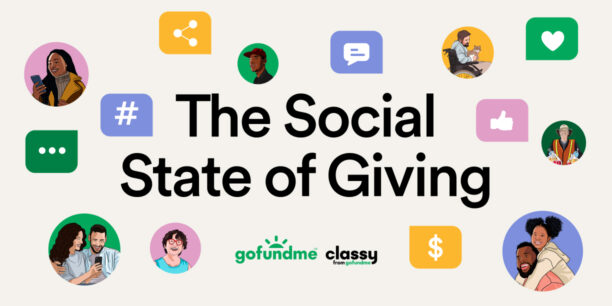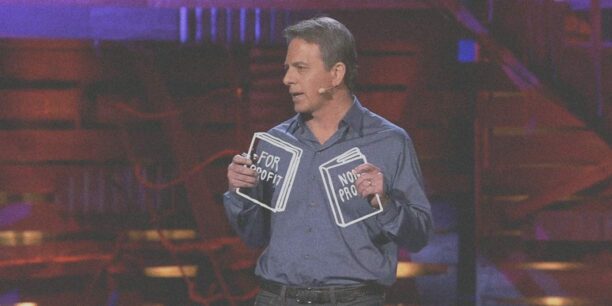9 Words That Tap Into the Psychology of Giving

For nonprofits, understanding donor behavior is a well-sought secret to creating an effective fundraising campaign. And although there may not be a formula for instant fundraising success, the psychology of giving reveals there are certain words and best practices that can induce a higher rate of giving.
Free Download: The Pocket Guide to Fundraising Psychology
Jen Shang is one of the world’s first philanthropic psychologists, and she’s made it her mission to study what motivates donors and what it says about their lives and our society. She sees philanthropy as a way for donors to experience human love, which drives them to share it and support others.
As such, Shang proposes that there are words you can use in your outreach that tap into this psychology of giving. Success could be as simple as changing some words in your ask.
Shang’s Inspiration
Before we dig into what helps encourage giving, it’s important to understand what kick-started Shang’s foray into the psychology of giving.
She heard a donation appeal from a public radio station that said, “give us money or we’ll go off the air next week.” According to a story published by Third Sector, this struck Shang as odd.
“Why would new donors believe the station would close without their support if it had managed to survive without it thus far? And why would existing donors be excited by the prospect of saving the station from an inevitable death?”
Her response was to call in and tell the radio station that they might be better off if they reframed the ask. Instead of saying they were going to die, she suggested they tell listeners that they were “the best source of local music around.”
When the radio station acknowledged her input and changed their appeal, she realized this was an area of the social sector she could help improve. Her studies in the psychology of giving not only helped her identify nine words that inspire people to give, but also how to use them to move prospective donors.
9 Effective Words for Fundraising
According to Shang, there are nine adjectives that Americans use to describe a moral person:
- Kind
- Caring
- Compassionate
- Helpful
- Friendly
- Fair
- Hard-working
- Generous
- Honest
Select a couple of adjectives from this list and weave them into your ask. Make the connection for your supporters between contributing to a campaign and their innermost perceptions of who they are as individuals.
But rather than throwing them around inadvertently, you have to be strategic in how you use them. Shang is quoted in a New York Times article explaining this more:
“Randomly injecting these words into the same communication that donors would not otherwise read anyway does not help anybody. It is about allowing the donors the opportunity to reflect on who they think they are.”
One mindful way you can infuse your asks with these words is to consider how different segments of your supporters might respond to different words and build your appeal accordingly.
Tailoring the Tone of an Ask
A crucial component of your fundraising ask lies in its tone, as well as the audience. Since donors are more likely to give when contributing is personally meaningful to them, customize your language so they can connect supporting your cause with their core sense of individuality.
For example, men and women tend to respond differently to certain words in fundraising asks. One of Shang’s studies shows that when appeals use adjectives from the previous list, like “kind and compassionate,” women increased their giving on average by 10 percent. On the other hand, male donors are prompted to give more when solicitations use adjectives like “strong,” “responsible,” and “loyal.”
When wording your appeal, also consider the donor base you’re addressing. Depending on your target audience, some key adjectives may be more appropriate than others in motivating supporters to give.
Donors also give when they can trust and feel satisfied with the way they’re treated by your organization. Remember that your “thank you” is just as important as your “please.” Promptly thank your donors, inform them about the outcome of your campaign, and let them know how their contributions helped make a difference.
An Example in the Wild
Jeff Martin, a senior consultant at EAB, claims that writing an appealing message is more important than ever before. “It’s no longer enough to simply have a good cause to promote,” he says.
Organizations have to create compelling and engaging asks so they can stand out among the noise to capture the attention, and ultimately the donations, of the masses.
Take, for example, Tom Ahern—one of the country’s most lauded fundraising message writers. The New York Times cites an appeal for Sharp HealthCare system he wrote that follows multiple principles of the psychology of giving:
“Dear Reader, You came to our hospital as a patient, in need of help. Thank you for that profound act of trust. Now we come to you, humbly, to ask for your help in turn. The cause for excellent health care, here in our community, needs you. Will you consider becoming its champion … by making a gift?”
This letter has been in use for 10 years and brought in donations from over 35,000 people. Every year it’s slightly adjusted and sent to former patients of the hospital. Sometimes the donation sent in is $1, but other times it’s been as large as $20,000.
The icing on the cake with this letter is that 10,000 of these responses came from new donors. Its tone and wording makes the connection between contributing to a campaign and the “innermost perceptions of who they are as individuals.”
Crafting the right message, with the right words, has the power to attract new donors, retain their support, and increase revenue.
Plenty of organizations have difficulties writing appeals, and instead of focusing their language on supporters they instead focus on themselves. An ask that’s more donor-centric, however, is critical to an effective fundraising initiative.
If you follow these simple guidelines to tap into the psychology of giving, you could increase engagement and maintain longer, more meaningful relationships with donors. Now get writing! And if you have any other psychology tips let us know in the comments.
Editor’s Note: This post was updated in August 2017 with fresh content.

The Pocket Guide to Fundraising Psychology
Subscribe to the Classy Blog
Get the latest fundraising tips, trends, and ideas in your inbox.
Thank you for subscribing
You signed up for emails from Classy
Request a demo
Learn how top nonprofits use Classy to power their fundraising.



